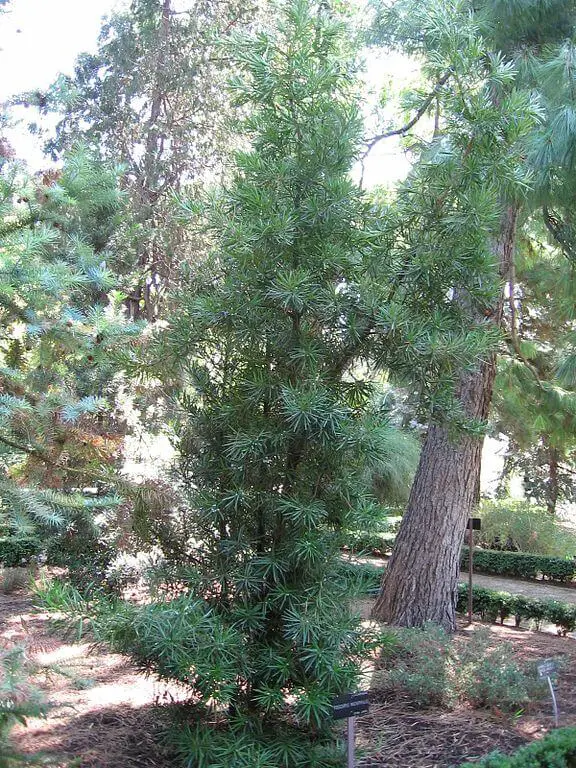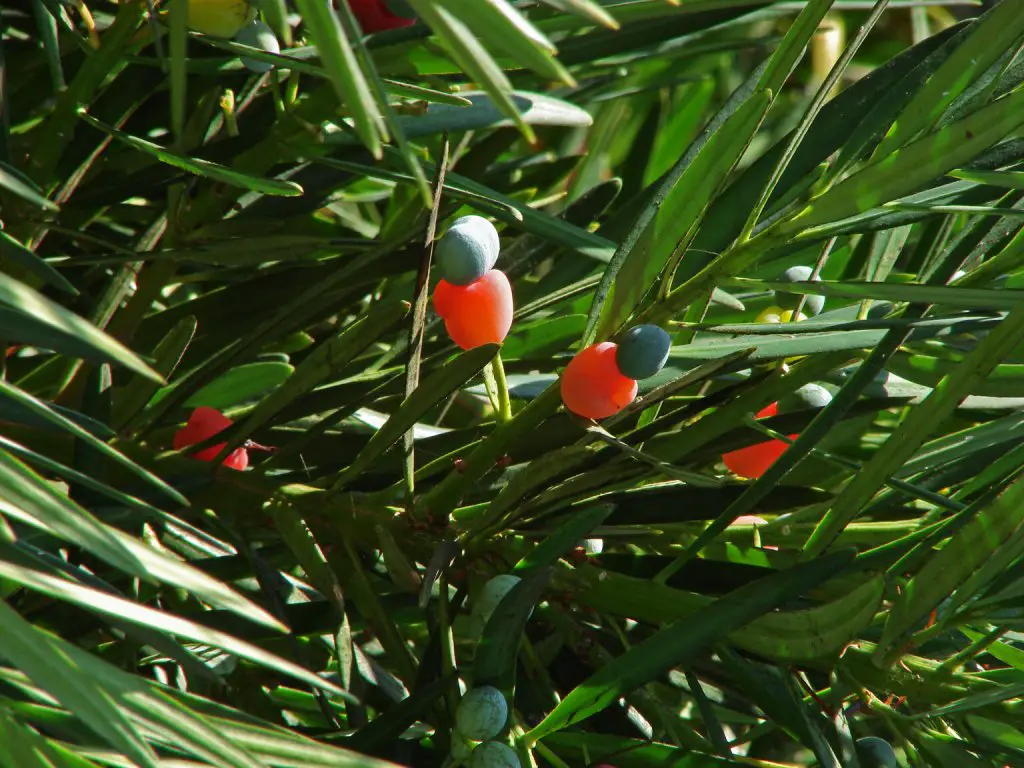Podocarpus macrophyllus (Podocarpus maki) is a versatile evergreen that can be grown as a shrub or as a tree. Mostly used along the fence and in gardens, it can also be used as an indoor plant. While Podocarpus maki’s plant and seeds are toxic, its berries are edible and mostly used in jams and pies.
Podocarpus Macrophyllus: Plant Profile
Common names include:
- Chinese Podocarpus
- Buddhist pine
- Yew plum pine
- Japanese yew
- Podocarpus maki bush
- Podocarpus maki
Podocarpus macrophyllus is a versatile evergreen that can be grown as a shrub or tree, depending on location.
Its decorative and adaptable nature makes it a favorite for commercial landscaping and use in yards. When allowed, Podocarpus can grow as tall as 50 feet in tree form, but it can also be kept much smaller and grown in containers or pruned as a shrub.
What Are You Foraging For Right Now?
We're thrilled to hear your ideas. What would you like to submit today? Feel free to share your thoughts and experiences with us.
The small, dark green needles and a slow growth rate mean easy maintenance.
Because the foliage on Podocarpus maki is so dense, this dioecious conifer is a popular choice when trying to create a natural barrier or add privacy.
Is Podocarpus a Tree or Shrub?
The versatility of Podocarpus maki allows it to be used as either an evergreen shrub or an evergreen tree. Designating it as one or the other will depend upon location and use.
Although it can grow quite tall when allowed, most who choose Podocarpus maki will keep it to a height of 5-6 feet through pruning.

Is Podocarpus Toxic or Poisonous in Any Way?
Podocarpus is generally thought to be inedible for both humans and dogs.
While this is true of the seeds and plant, Podocarpus maki produces small green, pointed flowers during the summer that are visible between the needles, and these small flowers mature into small blue or red fruits by fall.
These fruits are edible.
However, the core of these fruits may not be, so if eating the fruit, it’s advisable to avoid the core.

Where Does Podocarpus Maki Grow?
Although Podocarpus is widely grown in many countries, it’s native to the mountainous regions of Southern China and Japan, where it’s sometimes referred to as Kusamaki.
This deer-resistant evergreen prefers full sun to partial shade. It does well in most soil types but thrives in moist, well-drained, and slightly acidic soils. It will not tolerate wet soil well.
While Podocarpus can grow in cooler climates, it prefers warmer areas. Where the weather is cool, the slow-growing Podocarpus may not achieve the tallest heights, which for many purposes is fine.
The tallest growth and longest bloom time will occur in USDA hardiness zones 7-9.
How To Identify Podocarpus Macrophyllus in Nature?
The most identifiable trait of Podocarpus maki is its narrow, conical shape. This shape persists regardless of its location and use, although pruning can alter it. Depending upon the amount of pruning, it can look like either a large shrub or a narrow tree.
It can be further identified by its shiny and dark green needles on top with a lighter underside. These needles grow in a dense spiral formation, with new growth slightly lighter in color than established growth.

What is Podocarpus Macrophyllus Best Used For?
Because of its adaptability and versatility, Podocarpus maki has many potential uses.
Its narrow profile, drought tolerance, and amenability to pruning make it a favorite among landscapers and backyard gardeners looking to add height or create boundaries.
It’s often used along fence lines for privacy or in city areas to add interest and divisions between properties. You can find it growing both inside and outside shopping malls and office buildings.
Podocarpus can be grown as espalier and trained against flat surfaces for decorative purposes. And because it handles shearing and shaping well, it also lends itself well to topiary designs and makes an excellent addition to Japanese-inspired gardens.
Podocarpus can be used as a container plant in colder regions and brought indoors to avoid freezing. Given the highly adaptable nature of this evergreen and flexible light requirements, it can also grow easily as a houseplant in full sun or part shade.
Truly an easy-to-care-for plant, Podocarpus maki can serve many functions in a multitude of environments.
Is it Expensive to Buy?
Prices for Podocarpus maki will vary according to size and place of purchase. If you are willing to purchase while small and wait for growth, you may pay as little as $12 for a gallon plant.
If, however, you are looking for an immediate barrier or to create privacy, you can expect to pay a great deal more.
Lorin is a writer, photographer and nature enthusiast in Sacramento, CA. In addition to gardening, she makes a regular practice of forging for edible plants and flowers. Nature nourishes if you know where to look.

